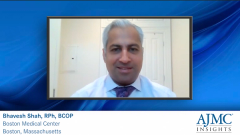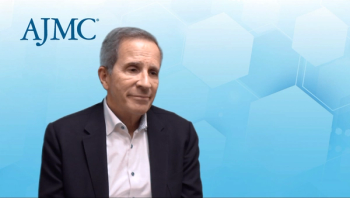
CVD Risk Associated With ADT in Prostate Cancer
Focusing on available agents in prostate cancer, experts consider how androgen deprivation therapy impacts risk of cardiovascular disease.
Episodes in this series

Transcript:
John L. Fox, MD, MHA: As far back as 2010, several societies recognized that there is increased risk associated with treatment with androgen deprivation therapy [ADT], specifically and primarily, GnRH [gonadotropin-releasing hormone] agonist therapy. There have been a number of studies since that time that show there is an increased risk of coronary vascular morbidity and mortality in patients getting GnRH agonists compared to antagonists. As a result, we should be evaluating those risks for cardiovascular disease when making treatment decisions in patients with prostate cancer.
Professional society guidelines aren’t real clear, however, on the role of GnRH antagonists vs. agonists. While there is good evidence to support that there is likely an increased risk with agonists vs. antagonists, the NCCN [National Comprehensive Cancer Network] guidelines don’t differentiate between agonist and antagonist therapy. And the ACS [American Cancer Society] Survivorship Care Guidelines simply indicate that men should be evaluated for cardiovascular risk and monitoring blood pressure and other risk factors associated with cardiovascular disease.
Bhavesh Shah, RPh, BCOP: There’s definitely been a lot of interesting literature around the different risk factors of androgen deprivation therapies that exist. This all ties back to [knowing] that there is this inappropriate metabolic syndrome that is involved with having the ADT therapies. Based on studies, we’ve known that this is due to suppression of the testosterone DHT [dihydrotestosterone], LH [luteinizing hormone], and cortisol, leading to this increase in fat mass and cholesterol, which we know eventually is going to have a significant impact for patients with preexisting cardiovascular disease. With the LHRH [luteinizing hormone-releasing hormone] agonist vs. antagonist, what is the implications of the 2 different mechanisms? If we look at it, there are quite a few pieces of literature. There’s definitely controversy around much of the literature out there because we know that much of it is going to be retrospective analysis from large health care databases. It may be meta-analysis from taking phase 3 randomized controlled trials.
I’ll start with the first one, a very large analysis of the French database, which basically showed cardiovascular risk to be similar in men taking LHRH agonists or GnHR antagonists. Then you have another piece of literature by [Dr. Peter] Albertsten, and colleagues, which showed that in a post-hoc analysis among men with preexisting cardiovascular disease, the risk of cardiovascular events within 1 year of starting therapy was significantly lower with patients who are treated with GnRH antagonists vs. LHRH agonists. This was pooled data from 6 phase 3 randomized control trials, including about 2000 patients, between 2005 and 2012. It was essentially comparing the efficacy, but then also looking at the cardiovascular impact.
Then there’s another trial, which was prospectively done, by [Dr. David] Margel, and colleagues. This was a randomized controlled, smaller phase 2 trial, open label, about 80 patients with prostate cancer who also had preexisting cardiovascular disease, who were randomized to receiving a GnRH antagonist vs. LHRH agonist for 1 year. A secondary end point was looking at the differences between the cardiovascular events, showing that the patients who were receiving antagonists had lower cerebrovascular events and cardiovascular events then those treated with agonists. There’s a lot of literature out there. Not all of it is randomized controlled trials. A lot of it has been either from large health care system databases or phase 3 meta-analysis from a large cohort of trials, and then a small phase 2 [trial] that was prospectively designed.
Transcript edited for clarity.
Newsletter
Stay ahead of policy, cost, and value—subscribe to AJMC for expert insights at the intersection of clinical care and health economics.

































































